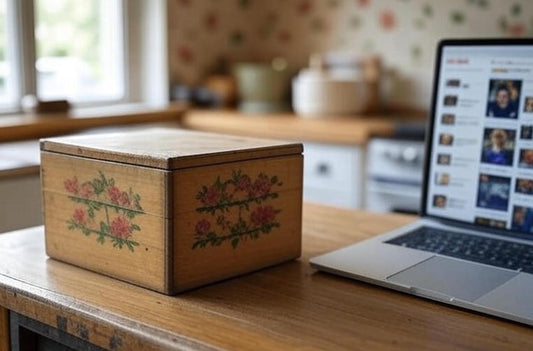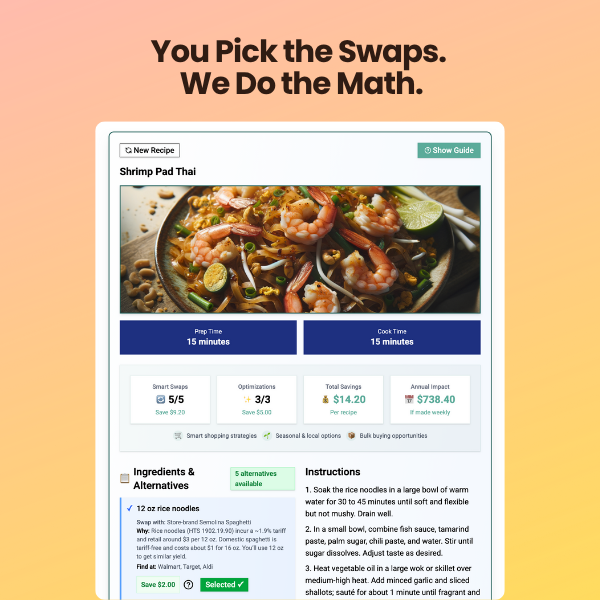
The Ultimate Guide to Cooking the Perfect Turkey: Stress-Free Thanksgiving
Babette PepajThanksgiving is all about gathering with loved ones, making memories, and, of course, indulging in some incredible food. But let’s be honest: when it comes to roasting that turkey, the pressure is real. Whether you're hosting for the first time or you're a seasoned pro looking to up your game, the perfect turkey can feel like the Mount Everest of holiday cooking.
Here’s the good news: you don’t have to climb that mountain alone. Meet BakeBot, your AI-powered kitchen assistant, it's a free tool a BakeSpace.com to help guide you through Thanksgiving like a calm, stress-free sous chef. Whether it’s answering a cooking emergency (“Uh-oh, did I add the butter too early?”), adjusting recipes for dietary restrictions, or helping with those all-important turkey timings, BakeBot has your back.
Over the next month, we'll be tackling the top Thanksgiving cooking questions. First up! How to Turkey like a boss, so you can focus on enjoying the holiday instead of sweating over the stove.
1. How do I cook a turkey?
Classic oven roasting is the gold standard. Start by preheating your oven to 325°F. Rub your turkey with butter, herbs, and spices, then pop it breast-side up on a roasting rack. Need rub inspiration? Ask BakeBot! Place it in a shallow pan to catch those precious drippings (hello, gravy!), and let the oven do the work. You may start to hear about a growing trend of turning your bird upside down first to keep the white meat from drying out, but that can be dangerous. So use common sense.
Cooking at too high of a temperature can cause the outside to brown too quickly, while the inside remains undercooked. Stick with 325°F.
BakeBot Tip: For that beautiful golden skin, pat your turkey dry before seasoning and let it air-dry in the fridge for a few hours. Crispy skin without drying out the meat—trust me, your guests will thank you!
2. How long do I cook a turkey per pound?
Here’s the rule of thumb: 15 to 20 minutes per pound at 325°F if your bird’s unstuffed. If you’re cooking with stuffing, add another 30'ish minutes to your total cooking time.
Here’s a general guideline:
8-12 lbs: 2.5 to 3 hours12-14 lbs: 3 to 3.75 hours
14-18 lbs: 3.75 to 4.25 hours
18-20 lbs: 4.25 to 4.5 hours
20-24 lbs: 4.5 to 5 hours
Always use a meat thermometer to ensure the internal temperature reaches 165°F.
3. What temperature should the turkey be when it’s done?
Your turkey is fully cooked when the internal temp hits 165°F in the thickest part of the thigh and breast. No need to cut into it to check—just use your trusty meat thermometer.
BakeBot Tip: Don’t be in a rush, carving the turkey immediately after roasting causes juices to escape, leaving it dry. Allowing it to rest for 20-30 minutes before carving helps lock in the moisture.
4. How do I thaw a frozen turkey safely?
The safest way? In the fridge, hands down.
Plan ahead, because it takes about 24 hours of thawing for every 4-5 pounds. So if you’ve got a 15-pound turkey, give it at least three days to thaw completely. In a pinch, use the cold water method: submerge your turkey in cold water, changing the water every 30 minutes. This takes about 30 minutes per pound, and you’ll need to cook it immediately afterward.
Leaving a turkey out on the counter to thaw is a BakeSpace No No. It's dangerous because it can enter the "danger zone" of temperatures between 40°F and 140°F (4°C to 60°C), where bacteria like Salmonella and Campylobacter can grow rapidly. These bacteria can cause foodborne illnesses, and the turkey may spoil even though the inside might still be frozen.
However, putting a cold turkey in the oven can result in uneven cooking. It's better to let it sit at room temperature for 30-60 minutes before roasting. So thaw in fridge, 30 minutes before you start to cook, take it out of the fridge and prep it for cooking, then start to bake!
5. Should I brine my turkey?
Brining isn’t a must, but if you want a juicy, flavorful turkey, it’s definitely a classy move. You can go with a wet brine (a saltwater bath) or a dry brine (a salt rub). Both work wonders; it just depends on how hands-on you want to be.
The Key Differences:
* Wet brine gives more added moisture, while dry brine enhances the turkey's natural juiciness.
* Dry brining results in crispier skin, while wet brining may make the skin softer.
* Dry brining usually offers a more concentrated flavor, while wet brining produces a subtler taste.
BakeBot Brine Hack: A simple wet brine recipe includes water, kosher salt, sugar, and herbs like rosemary and thyme. Brine your turkey for 12-24 hours, then rinse and pat dry before roasting. Delicious results, guaranteed!
6. How do I prevent my turkey from drying out?
The biggest enemy of a turkey is overcooking. Keep a close eye on the internal temperature, and don’t go beyond that magic 165°F. Basting every 35-45 minutes helps keep the meat moist, but remember: opening the oven too much lets heat escape, which can mess with cooking times.
BakeBot Tip: Cover your turkey loosely with foil if it’s browning too quickly but isn’t fully cooked inside yet. Foil is your friend when it comes to balancing crispy skin with juicy meat.
7. What’s the difference between roasting, deep-frying, and smoking a turkey?
* Roasting: The classic method, slow and steady in the oven. It’s reliable, and you’ll get that nice golden-brown skin.* Deep-frying (aka we might burn down the house): This gives you crispy skin and super juicy meat in a fraction of the time. But be careful—make sure your turkey is completely thawed and dry to avoid any dangerous oil splatters. Here's a Deep Fried Turkey Recipe
* Smoking: For deep, rich flavor, smoking is the way to go. It’s a slower process, but if you’re a fan of that bold, smoky taste, it’s worth the wait.
Need inspiration? Ask BakeBot to create a recipe for you or try these turkey recipe from BakeSpace Members:
Grandma Brooks' TurkeyChicken and Turkey Sausage Stuffing
How to Cook a Turkey with Coconut Oil
Angel Acres Awesome Turkey Baked with Honey
Maple-Roasted Turkey with Sage, Smoked Bacon and Cornbread Stuffing
8. How do I know when the turkey is done without cutting it?
The best way to check for doneness is with a meat thermometer. Stick it into the thickest part of the turkey (the thigh and the breast). When it reads 165°F, your turkey is good to go! You don't have to cut into your bird.
9. Should I stuff the turkey or cook the stuffing separately?
Cooking the stuffing separately is generally safer and ensures both the stuffing and turkey cook evenly. If you do stuff your turkey, make sure the stuffing also reaches 165°F to avoid any food safety issues. Making stuffing separately is also great for those guests that need a vegan version.
10. How do I carve a turkey?
Let the turkey rest after roasting (20-30 minutes). Start by removing the legs and wings, then slice the breast meat across the grain. It’s easier—and less stressful—to carve the turkey in the kitchen and arrange the pieces on a platter for serving. You’ll look like a pro, and no one’s watching your every move!
11. What do I do if you have a turkey emergency this Thanksgiving?
When in doubt, ask BakeBot, the Ultimate Thanksgiving Sidekick. Thanksgiving should be about enjoying great food with the people you love, not stressing over the perfect turkey. That’s where BakeBot comes in—whether you need last-minute recipe advice, a quick recipe modification, or a real-time solution to a kitchen mishap, BakeBot is like your personal Thanksgiving kitchen hotline. It’s the Thanksgiving help you need, whenever you need it.
And the best part? You don’t even need to be a BakeSpace member to use our pop-up chat. Whether you’re cooking for two or a whole crowd, BakeBot is here to make your life easier, one step at a time.
Join BakeSpace today (it’s free!) and take your Thanksgiving to the next level with expert tips, helpful tools, and plenty of delicious inspiration. We’re here to answer all your burning turkey questions from now until the big day!
PS: Stay tuned for more Thanksgiving tips, tricks, and recipes in the weeks leading up to the holiday. Let’s make this your best—and most stress-free—Thanksgiving yet!










